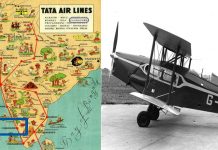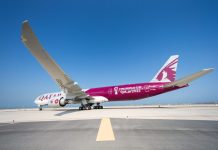Why aircrafts are pushed by a truck to bring them to the runway?
Aircrafts are usually ‘pushed’ by ground vehicles known as tow vehicles such as this: The reason I stress pushed, is because it is used mainly to reverse an airplane from the terminal area, until it is in a position to move by itself.
These tow trucks will only help move the aircraft to an area where the pilots can safely switch on the engines, not the runway! (Ground vehicles are rarely allowed to move on a runway (save for emergencies and inspection), and the aircraft is supposed to move to the runway by itself).
With those out of the way, lets come to why the aircraft needs to pushed back?
Aircrafts don’t have powered wheels, and hence cannot move in reverse, let alone forward by themselves. Imagine a tiny jet strapped to one of your toy cars; that’s essentially how airplanes work on the ground! They go where the engines push them towards. (Note: There is a mechanism known as reverse thrusters, which allow the engine air flow to be pushed towards the front, but that is highly unadvised, and is only used to reduce speed immediately after landing.)
Another reason to push back an aircraft to a safe area, is for safety reasons. The engines produce tremendous thrust from the exit, and an immense vacuum from the front; enough to suck in people, small vehicles, ground equipment etc. Hence it is a common procedure to start the engines once it is cleared away from the terminal area and lined up on a taxiway (roads that lead to the runway).
If you’ve ever looked out the window at an airport, you’ve probably seen planes being pushed backward by vehicles called Pushback Tugs. Well there are regular Tugs, and there are SuperTugs — and the SuperTug looks like the unholy matrimony of a Hummer and a Batmobile, with an ant’s strength/weight ratio.
The common pushback comes in various shapes and sizes, and either runs off battery-supplied electricity, or diesel fuel. Some are open-wheel, while others have enclosed cabs. Typically you’ll see the enclosed ones in cold weather cities.
Pushbacks all have the same basic functions. The driver sits behind a big steering wheel, while wearing a headset to communicate with the pilots. The headset can either be wireless, or connected directly into the communications box on the nose of the plane by a long tether. Like any car, there is a horn, lights, parking brake, gear shifter and even a turn signal.
When the flight is ready to depart, the jetbridge is pulled back. After completing their pre-departure checklist, the pilots call the tower for clearance to push back away from the gate. The driver is responsible for communicating to the pilots that it’s safe for the plane to leave, and will say something like this: “The walk-around is complete, the bypass pin is in, the safety zone is clear, and all cargo bin doors and access panels are closed. We’ll be doing a 2-person push.” The 2-person push means the pilot needs to check for two people when the push is complete. In addition to the pushback driver, there is a wing walker, who provides an extra set of eyes to the pushback driver, making sure there are no vehicles, people or obstacles behind the aircraft. This can vary somewhat, based on the airline procedures, and the aircraft type.
At that point the pilot says, “Brakes released, clear to push” which the driver will acknowledge, and depending again on the airline policy and the airport configuration, the driver may give the okay to start the plane’s engines. Because some airport terminals are so densely populated by gates, sometimes planes are towed a good distance from the gate and out to a taxiway before the engines are spooled up.



















